maintenance FORD ESCORT 1997 7.G Owners Manual
[x] Cancel search | Manufacturer: FORD, Model Year: 1997, Model line: ESCORT, Model: FORD ESCORT 1997 7.GPages: 191, PDF Size: 2.02 MB
Page 1 of 191
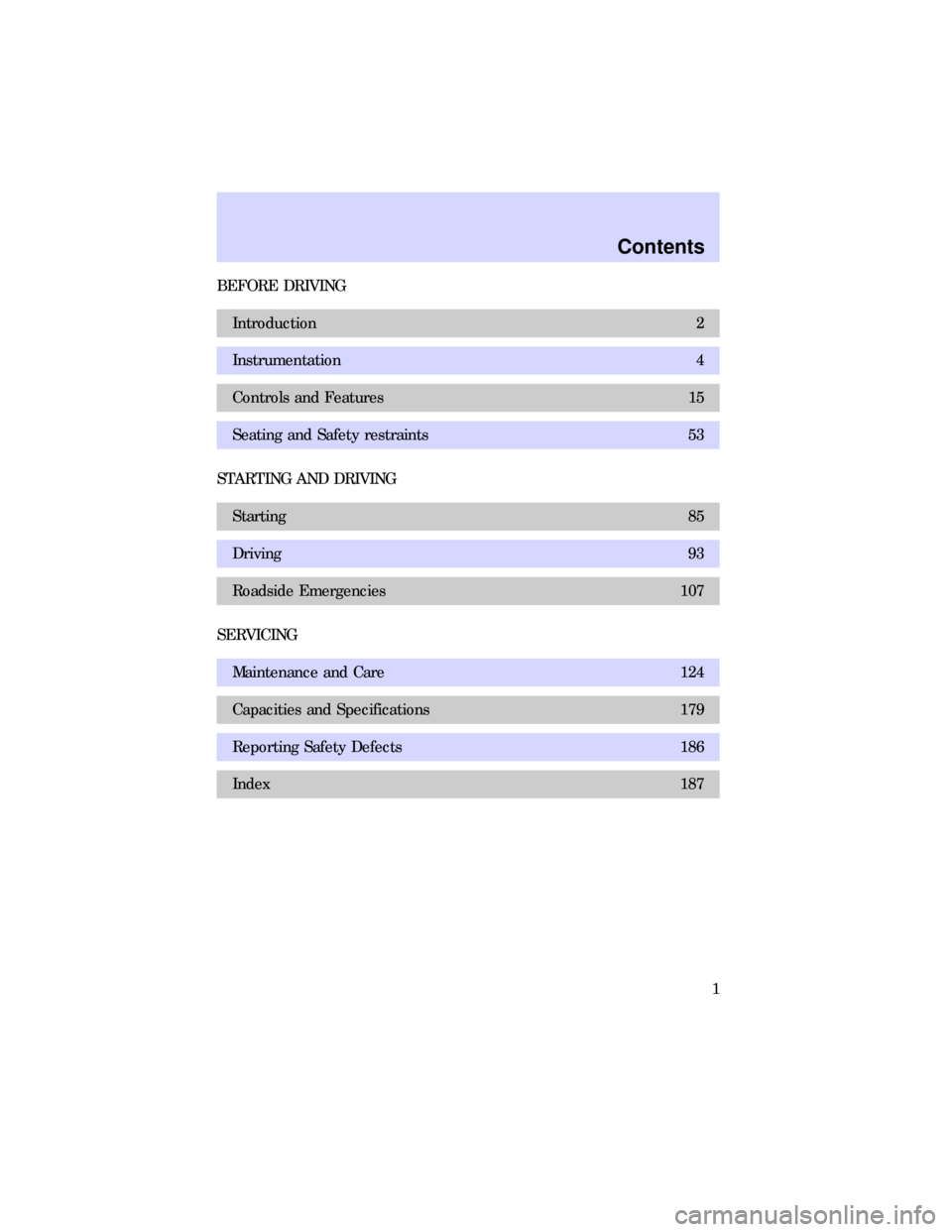
BEFORE DRIVING
Introduction 2
Instrumentation 4
Controls and Features 15
Seating and Safety restraints 53
STARTING AND DRIVING
Starting 85
Driving 93
Roadside Emergencies 107
SERVICING
Maintenance and Care 124
Capacities and Specifications 179
Reporting Safety Defects 186
Index 187
Contents
1
Page 10 of 191

Engine coolant
Illuminates when there is low
coolant level or a problem with the
engine coolant system. Stop the
vehicle and check the engine
coolant level as soon as possible.
The light will also briefly illuminate
when the ignition key is turned to
ON and the engine is off. For more
information on engine coolant,
refer toChecking and adding
engine coolantin the
Maintenance and carechapter.
Liftgate ajar (if equipped)
Illuminates when the ignition is in
the ON position and the liftgate is
open.
Many of the lights illuminate
briefly when you start the vehicle.
For more information on warning
light illumination, refer to
Preparing to start the vehiclein
theStartingchapter.
Warning chimes
Safety belt warning chime
For information on the safety belt
warning chime, refer to the
Seating and safety restraints
chapter.
Supplemental restraint system
(SRS) warning chime
For information on the SRS
warning chime, refer to the
Seating and safety restraints
chapter.
CHECK
COOLANT
Instrumentation
10
Page 13 of 191
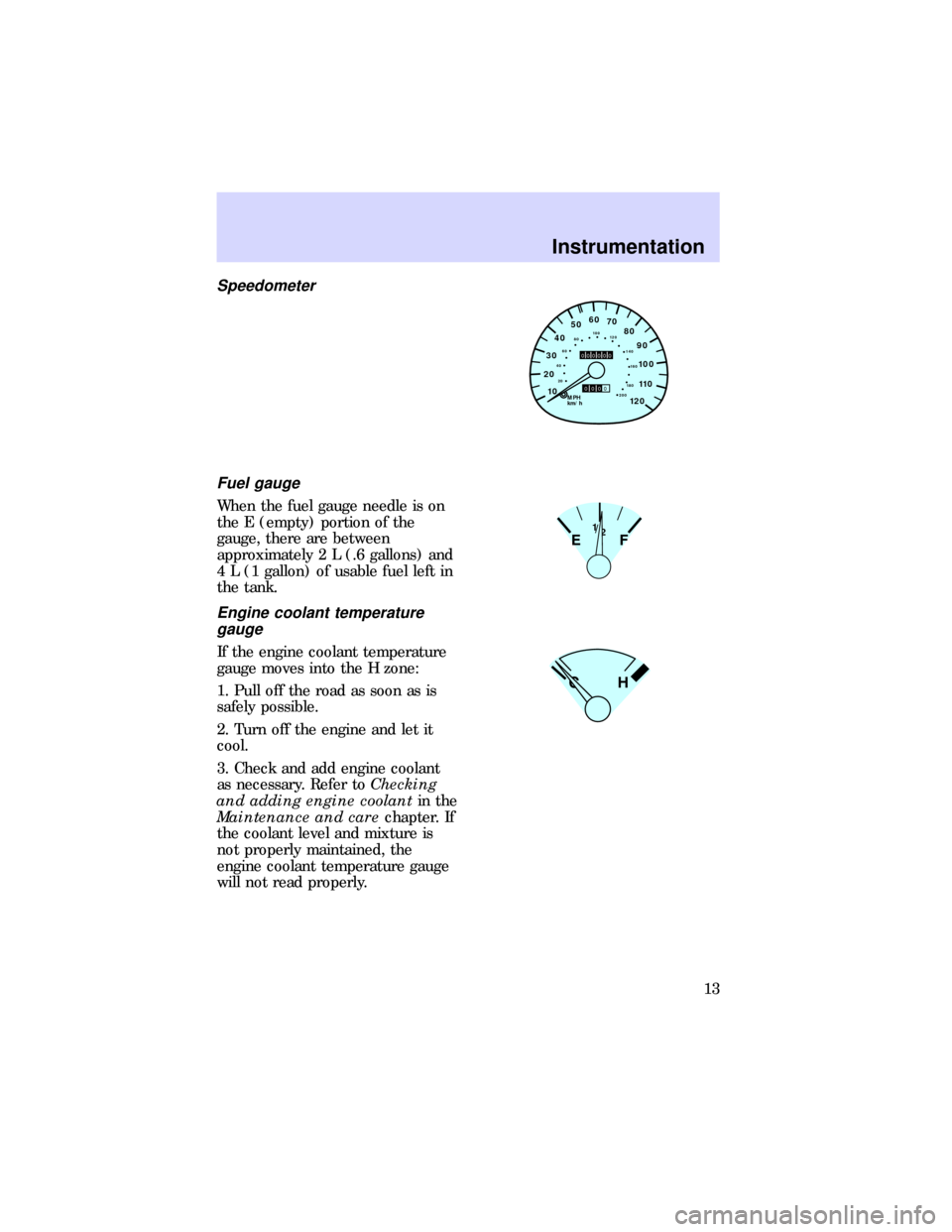
Speedometer
Fuel gauge
When the fuel gauge needle is on
the E (empty) portion of the
gauge, there are between
approximately 2 L (.6 gallons) and
4 L (1 gallon) of usable fuel left in
the tank.
Engine coolant temperature
gauge
If the engine coolant temperature
gauge moves into the H zone:
1. Pull off the road as soon as is
safely possible.
2. Turn off the engine and let it
cool.
3. Check and add engine coolant
as necessary. Refer toChecking
and adding engine coolantin the
Maintenance and carechapter. If
the coolant level and mixture is
not properly maintained, the
engine coolant temperature gauge
will not read properly.
0000
000000
MPH
km/h
10 2030405060
70
80
90
10 0
12 011 020 4060
8010 0
12 0
16 0
18 0 140
200
EF1/2
CH
Instrumentation
13
Page 60 of 191
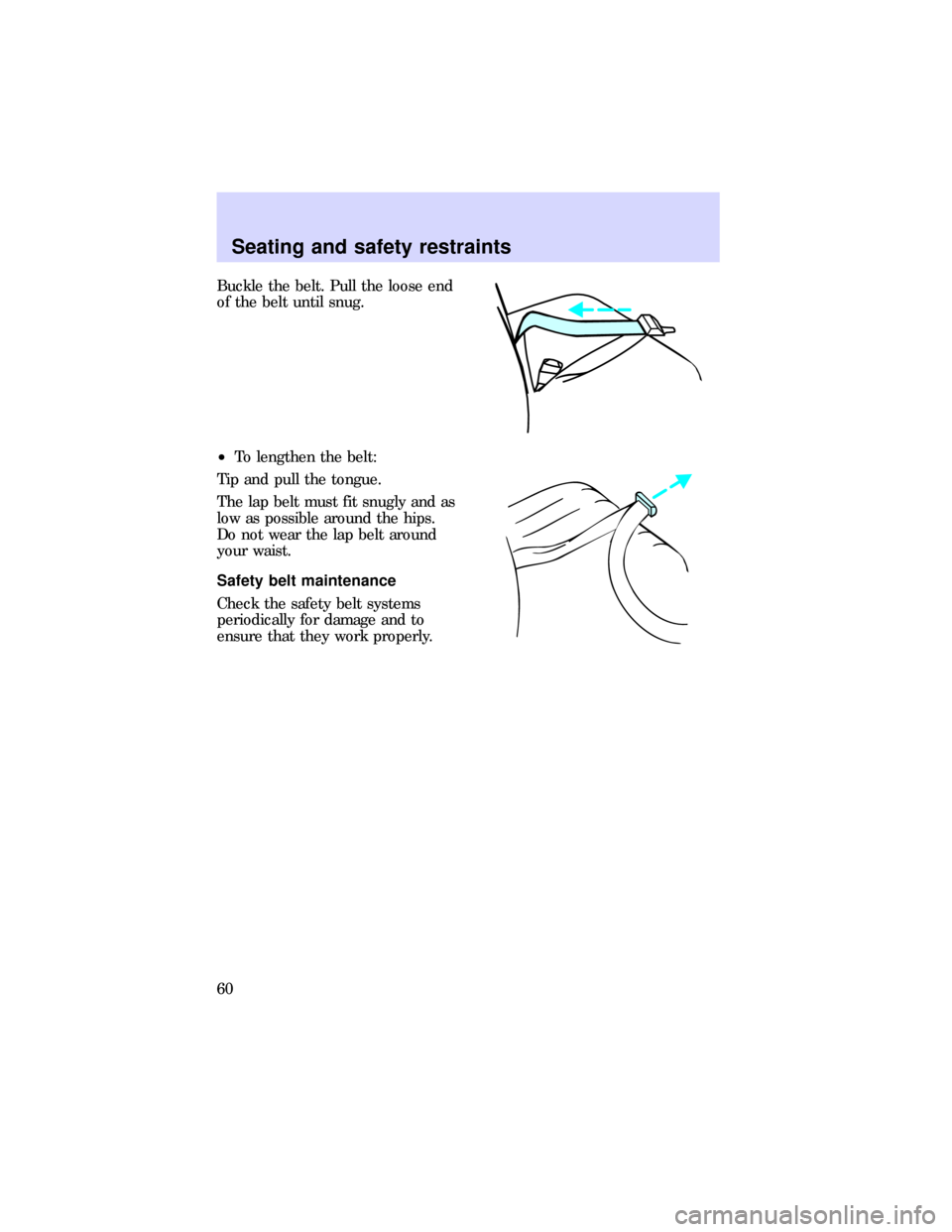
Buckle the belt. Pull the loose end
of the belt until snug.
²To lengthen the belt:
Tip and pull the tongue.
The lap belt must fit snugly and as
low as possible around the hips.
Do not wear the lap belt around
your waist.
Safety belt maintenance
Check the safety belt systems
periodically for damage and to
ensure that they work properly.
Seating and safety restraints
60
Page 84 of 191
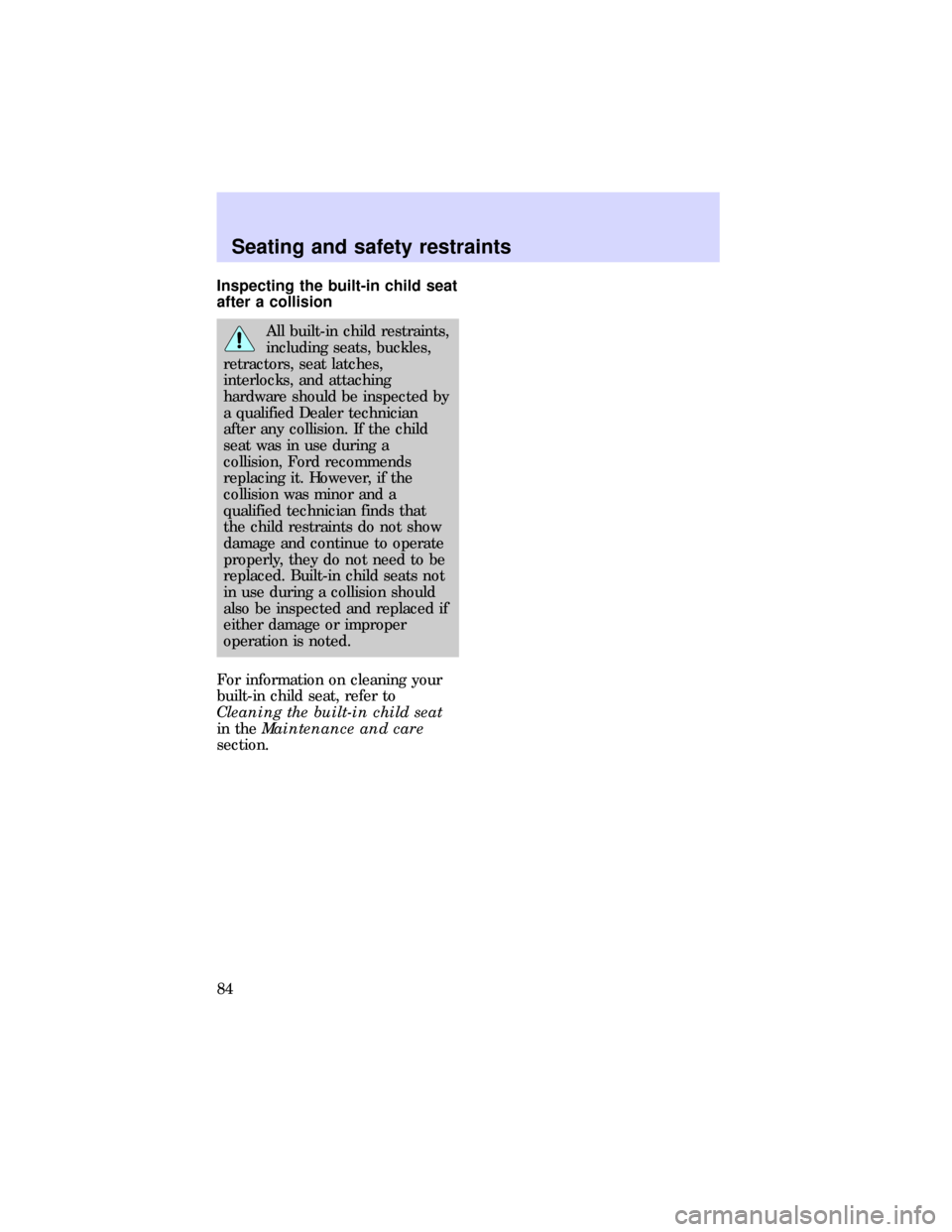
Inspecting the built-in child seat
after a collision
All built-in child restraints,
including seats, buckles,
retractors, seat latches,
interlocks, and attaching
hardware should be inspected by
a qualified Dealer technician
after any collision. If the child
seat was in use during a
collision, Ford recommends
replacing it. However, if the
collision was minor and a
qualified technician finds that
the child restraints do not show
damage and continue to operate
properly, they do not need to be
replaced. Built-in child seats not
in use during a collision should
also be inspected and replaced if
either damage or improper
operation is noted.
For information on cleaning your
built-in child seat, refer to
Cleaning the built-in child seat
in theMaintenance and care
section.
Seating and safety restraints
84
Page 106 of 191
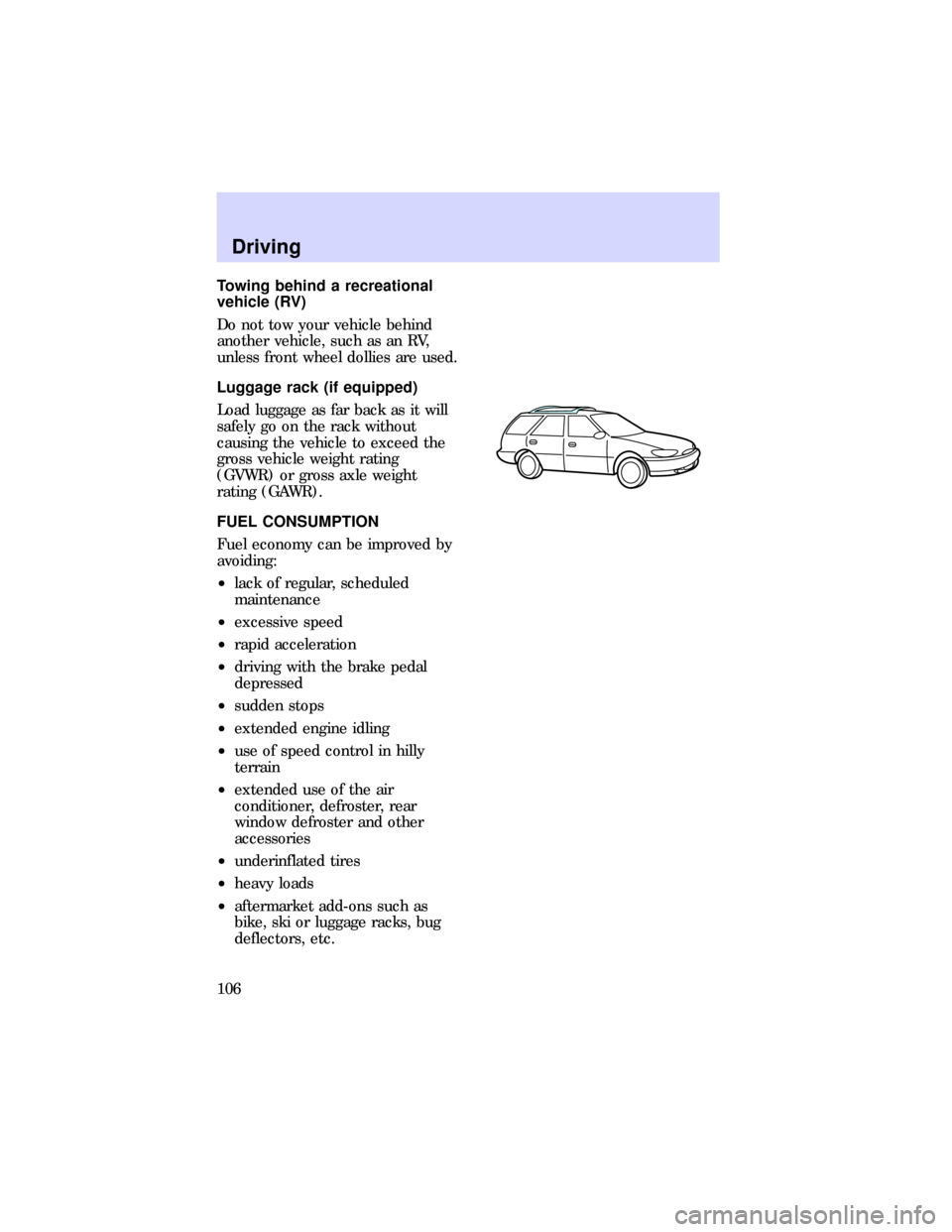
Towing behind a recreational
vehicle (RV)
Do not tow your vehicle behind
another vehicle, such as an RV,
unless front wheel dollies are used.
Luggage rack (if equipped)
Load luggage as far back as it will
safely go on the rack without
causing the vehicle to exceed the
gross vehicle weight rating
(GVWR) or gross axle weight
rating (GAWR).
FUEL CONSUMPTION
Fuel economy can be improved by
avoiding:
²lack of regular, scheduled
maintenance
²excessive speed
²rapid acceleration
²driving with the brake pedal
depressed
²sudden stops
²extended engine idling
²use of speed control in hilly
terrain
²extended use of the air
conditioner, defroster, rear
window defroster and other
accessories
²underinflated tires
²heavy loads
²aftermarket add-ons such as
bike, ski or luggage racks, bug
deflectors, etc.
Driving
106
Page 124 of 191

SERVICE RECOMMENDATIONS
Whenever possible, Ford has
designed parts that do not require
servicing. However when servicing
is required, Ford's goal is to make
servicing your vehicle as easy as
possible. To help you:
²We highlight do-it-yourself items
in the engine compartment for
easy location.
²Often, parts (such as the
headlamp bulbs) may be
replaced without tools.
²We provide you with aService
Guidethat makes tracking
routine service of your vehicle
easy.
If your vehicle requires
professional servicing, your
dealership can provide the
necessary parts and service. Check
theWarranty Information Guide
to find out what parts and services
are covered. Use only
recommended fuels, lubricants,
fluids, and service parts
conforming to Ford specifications.
Motorcraft parts are designed and
built to provide the best
performance in your vehicle.
Precautions for servicing your
vehicle
Be particularly careful when
inspecting or servicing your
vehicle. Here are some general
precautions for your safety:
Maintenance and care
124
Page 125 of 191
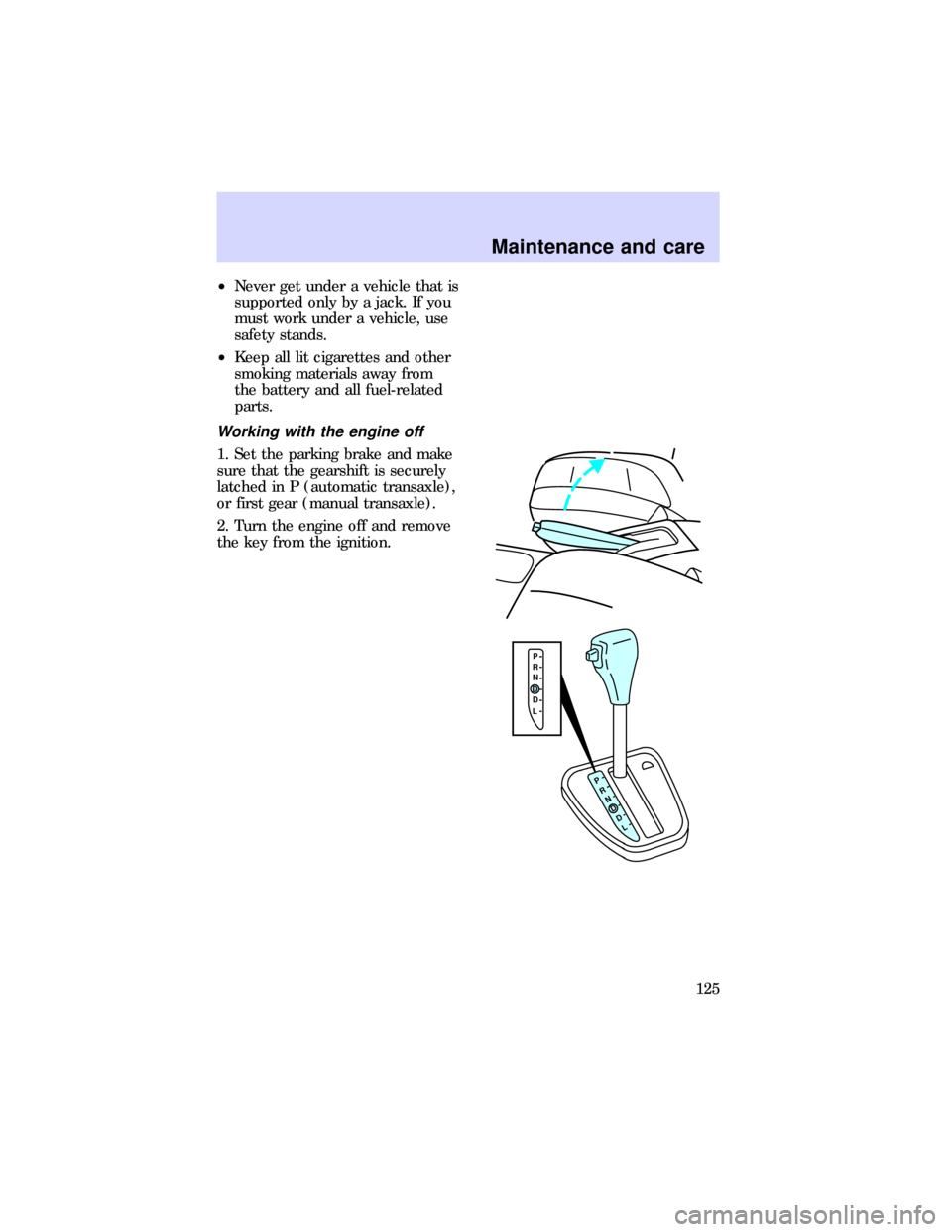
²Never get under a vehicle that is
supported only by a jack. If you
must work under a vehicle, use
safety stands.
²Keep all lit cigarettes and other
smoking materials away from
the battery and all fuel-related
parts.
Working with the engine off
1. Set the parking brake and make
sure that the gearshift is securely
latched in P (automatic transaxle),
or first gear (manual transaxle).
2. Turn the engine off and remove
the key from the ignition.
P
R
N
D
D
L
R
N
D
D
LP
Maintenance and care
125
Page 126 of 191
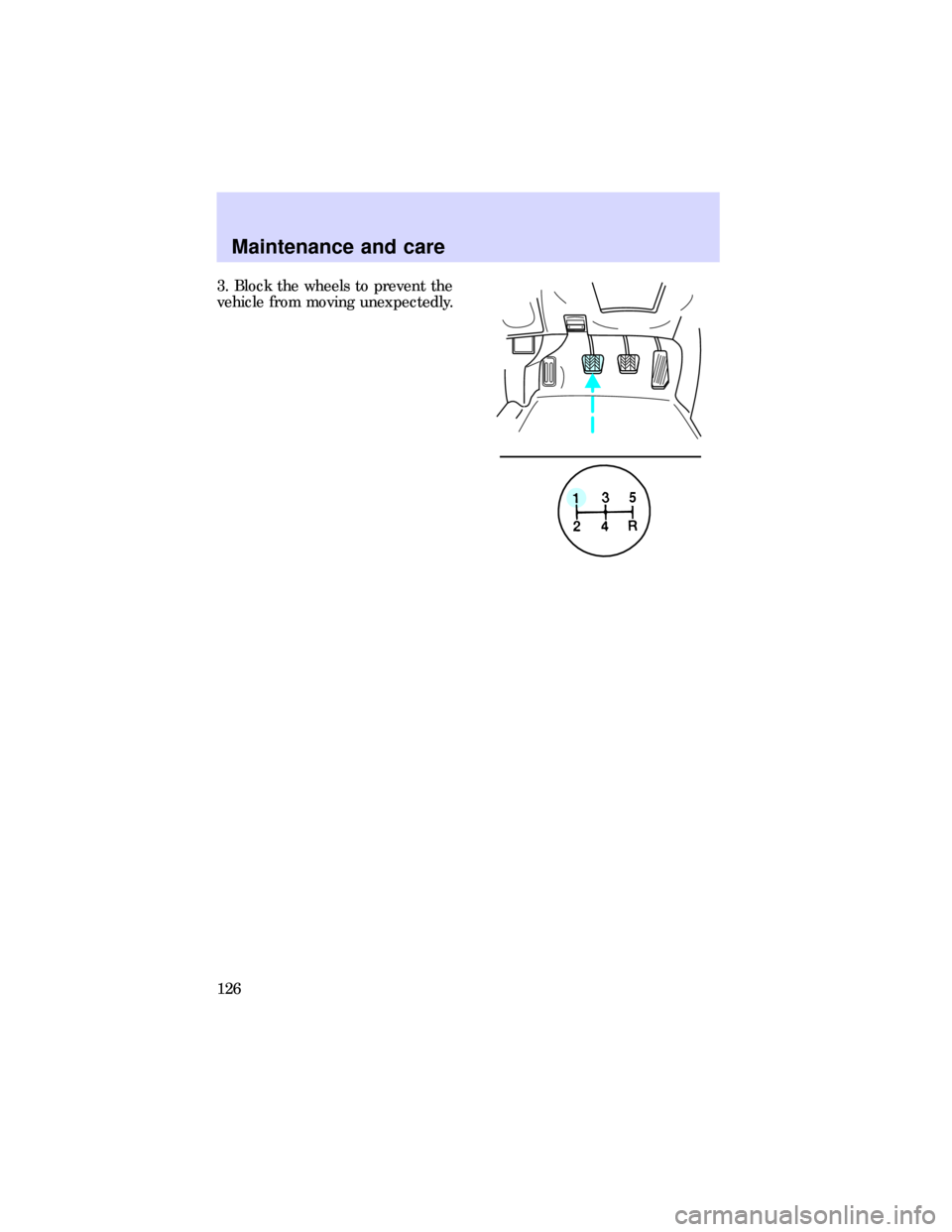
3. Block the wheels to prevent the
vehicle from moving unexpectedly.
5
Maintenance and care
126
Page 127 of 191
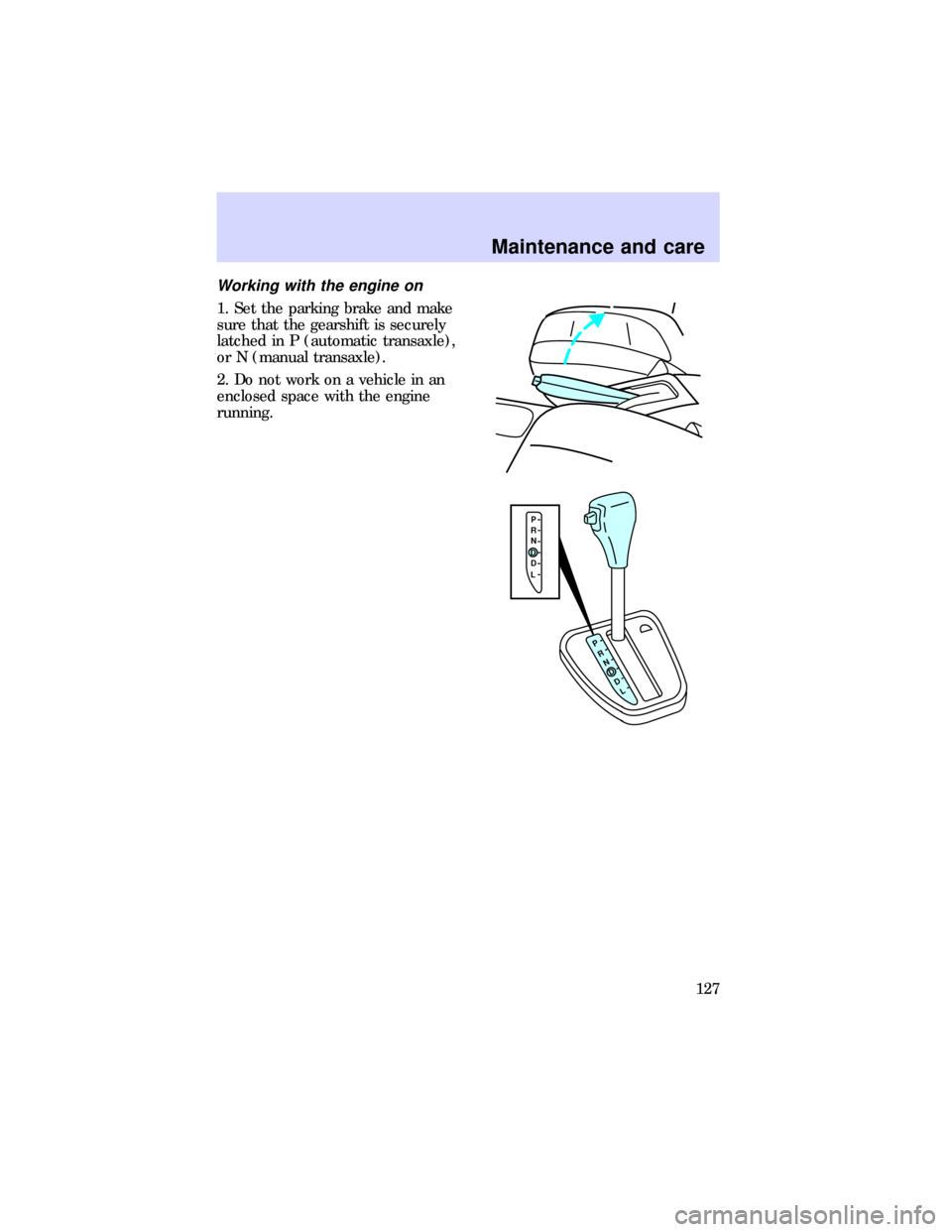
Working with the engine on
1. Set the parking brake and make
sure that the gearshift is securely
latched in P (automatic transaxle),
or N (manual transaxle).
2. Do not work on a vehicle in an
enclosed space with the engine
running.
P
R
N
D
D
L
R
N
D
D
LP
Maintenance and care
127